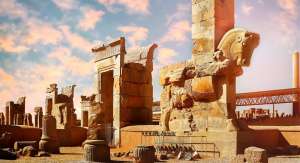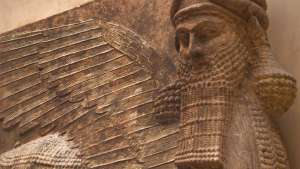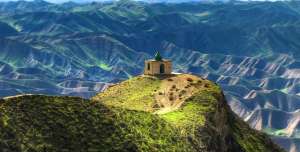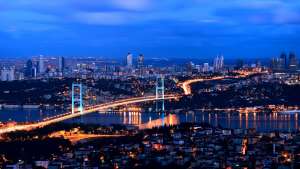The Kingdom of Saudi Arabia has long been shrouded in intrigue and mystery being closed to all but religious tourists for years. But with tourist visas now available, intrepid travellers can finally explore this enigmatic country full of interesting cultural and historical sites. Here are the best places to visit in Saudi Arabia.
Rub Al Khali (Empty Quarter)

Rub' al Khali directly translates to "Quarter of Emptiness" and it is no surprise as it is the largest sand desert on Earth. The arid sands span 250,000 square miles, covering much of the southern Arabian Peninsula, and is shared by Oman, Saudi Arabia, United Arab Emirates and Yemen. Step in the footsteps of the explorer Bertram Thomas, who crossed the Omani Empty Quarter in 1930, in a 4x4 expedition. Wild camp beneath the stars by a warming fire before waking up early to watch the sun rise over the rolling dunes.
HEGRA

There are perhaps no more recognisable sights in Saudi than the monumental rock-cut tombs suspended in the majestic desert at Hegra, near Al Ula in the heart of the kingdom. If these 131 enigmatic mausoleums recall the ancient ruins of Petra, that’s because they were built in the first century AD by the Nabataeans, the same nomadic warrior-traders behind Jordan’s wonder of the world. But while Petra hosts more than a million visitors a year, Hegra remains relatively undiscovered, attracting more wildlife than tourists. That might change in the next few years: Aman, Banyan Tree and Tulum-born Habitas are among the hotel groups opening eco- and heritage-sensitive camps around what could be one of the big destinations of the 2020s.
Edge of the World

UMLUJ

It’s not hard to see why this unassuming coastal town and region is often referred to as the Maldives of Saudi Arabia. To the north of the town, 104 atolls are scattered across a corner of the Red Sea that is most definitely turquoise. The quintessential Umluj activity is an island-hop – spotting dolphins on the way to outcrops including Jabal Hassan to snorkel, fish or laze on white sandbars, becoming as relaxed as the dugongs and hawksbill turtles that swim around these islets. This is also a world-class dive area; much quieter than Red Sea hotspots such as Sharm El Sheikh, but with a technicolour bounty of 1,200 fish species and 300 types of coral, four times as many as you’ll find in the Caribbean. Sustainable resorts are under development on a selected few islands, but most of the area is a thrillingly untouched natural aquarium.
Jeddah Corniche

Dhee Ayn Village

Asfar Lake

Al Disah Valley

AL BALAD, JEDDAH

Many Saudi cities have a historic quarter, often called Al Balad and marked by the scent of exotic spices and the beautiful cries of the call to prayer. Balad in Jeddah, Saudi’s cosmopolitan port city, is the most evocative of all – a series of tight alleyways between ancient coral-stone merchants' houses, home to oud sellers, clove-scented traditional bakeries and the vast, glowing Souq Al Alawi. Since it was listed as a UNESCO World Heritage site in 2014, many of the area’s vast, crumbling mansions have been sensitively restored, including the grand 106-room Nasseef House – now a museum and cultural centre hosting art and photography exhibitions as well as lectures by academics. What’s more, galleries, mangour woodcrafting workshops and cool cafés are breathing new life into once-derelict buildings, giving a district built in the seventh century a bright future.
Farasan Island

Al Wahbah Crater

DIRIYAH

Few sites are more striking than the ancient desert city of Diriyah, wrapped in the green oasis of Wadi Hanifa just outside Riyadh. It was once a hotbed of culture, a historic crossroads for pilgrims and traders throughout the centuries, and the ancestral seat of the royal dynasty. Today Diriyah’s museums, such as the spectacular Salwa Palace, delve into the citadel’s storied past. Dotted around its magnificent mud-brick architecture and lining its palm-fringed avenues, restaurants and coffee shops also nod to tradition with Najdi plates such as gereesh bil laban, cracked wheat cooked in a yogurt sauce.
Al Soudah

Tarout Castle

Green Arts Park

















